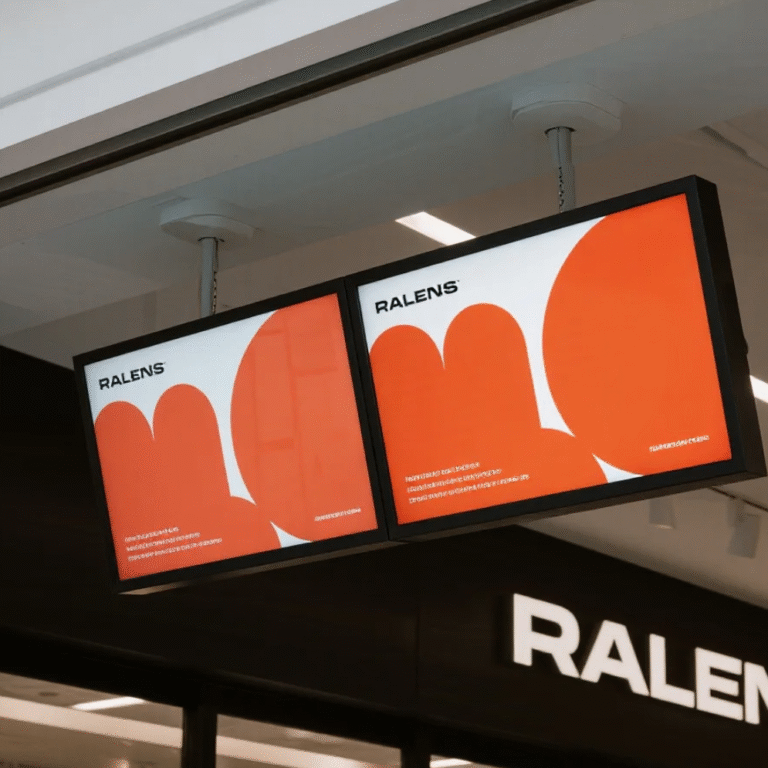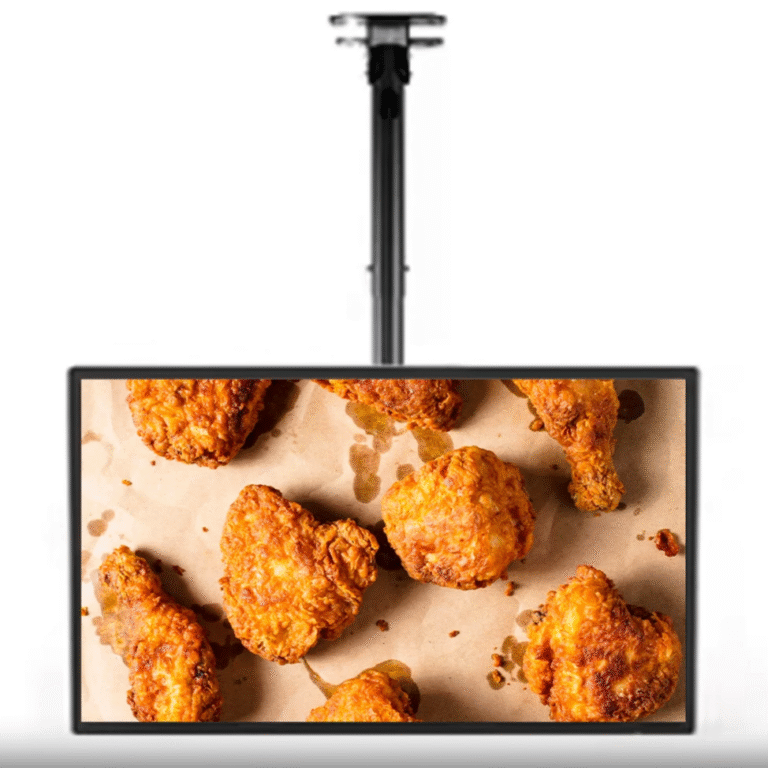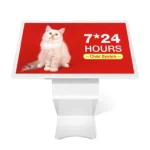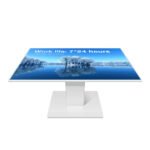What Exactly Is a Display Window and Why Does It Matter for Your Business?
A Comprehensive Guide to Digital Display Window Technology
Imagine walking down a busy street. Your eyes are constantly bombarded with visual information: storefronts, billboards, and the glow of screens. But some storefronts draw you in more than others. They don’t just show products; they tell a story. This compelling visual narrative is powered by a display window, which in today’s digital age, is far more than just a pane of glass. It’s a dynamic, interactive communication tool, a crucial component of modern digital signage that transforms a static storefront into an engaging, high-impact experience. For businesses, particularly those leveraging digital signage, understanding what a display window is and how to use it effectively is no longer optional—it’s essential for driving foot traffic and sales.
At its core, a display window is the transparent barrier between your business and the outside world. Historically, it served a simple purpose: to showcase merchandise. However, with the advent of digital technology, the term has evolved significantly, particularly in the context of digital signage. We’re no longer just talking about a passive view into a shop. Instead, a modern display window refers to a specialized, often high-brightness, transparent or semi-transparent digital screen designed for use in a storefront. These are not your average TVs; they are engineered to cut through sunlight, resist temperature fluctuations, and operate continuously, all while delivering stunning visual content. They serve as a powerful medium for digital marketing, allowing businesses to change promotions, showcase new products, and broadcast dynamic content with unparalleled flexibility and speed.
The Evolution and Core Features of Modern Display Window Solutions

The journey from a simple glass pane to a sophisticated digital screen is marked by significant technological leaps. Early digital signs were often repurposed indoor displays that struggled with glare and visibility. However, today’s dedicated display window displays are built with specific challenges in mind. One of the most critical features is high brightness, measured in nits. Standard indoor TVs might have 200-300 nits, which is perfectly fine for a dim room. Conversely, a good display window display can exceed 2500 nits, with some models reaching 5000 nits or more. This exceptional brightness ensures content remains vibrant and legible even on the sunniest days, preventing washed-out visuals.
In addition to brightness, durability is a major consideration. These displays are often exposed to direct sunlight, which generates significant heat. High-end display window solutions incorporate advanced cooling systems and durable components to prevent overheating and ensure a long operational lifespan. Furthermore, a great many of these displays are double-sided, allowing them to serve a dual purpose. They can face outward toward the street to attract passersby, and simultaneously display different content facing inward to engage customers who are already inside the store. This dual-purpose functionality provides maximum value from a single installation.
The content flexibility offered by digital display window signage is perhaps its most compelling advantage. Unlike static posters that require time and money to print and install, digital content can be updated in seconds from a remote location. This allows businesses to run time-sensitive promotions, display live social media feeds, or showcase dynamic product demonstrations. Imagine a clothing store promoting a flash sale that starts at noon, or a restaurant displaying a lunch special menu that changes daily. These capabilities are made possible by sophisticated content management systems that integrate with the displays, giving businesses unprecedented control over their visual marketing.
Why Digital Display Windows are a Game-Changer for Digital Signage Users

For businesses that have already invested in digital signage, incorporating a display window is a natural and highly impactful next step. It’s about extending your digital marketing efforts beyond the interior of your store and right out onto the street. Your interior digital signs are fantastic for engaging customers who are already in your space, but a powerful display window acts as a silent salesperson, working 24/7 to convert foot traffic into paying customers. It’s an investment in the most valuable real estate you own: your storefront.
The value proposition is clear: enhanced engagement, increased foot traffic, and ultimately, higher revenue. A static poster can be easily ignored, but a vibrant, moving video on a high-brightness screen commands attention. Businesses that have implemented digital display window displays often report a significant increase in walk-ins. The content they display doesn’t just show products; it creates a dynamic, appealing atmosphere that makes the business seem modern, innovative, and inviting. This visual statement alone can differentiate a store from its competitors and make it a destination.
Moreover, the data-driven insights that come with digital signage can be extended to display window applications. Businesses can track how long people look at different content, what time of day certain promotions are most effective, and even use sensors to measure foot traffic. This information allows for continuous optimization, ensuring that the content displayed is always performing at its peak. The entire process transforms storefront marketing from a static guessing game into a precise, data-backed science.
The Right Way to Use Your Display Window for Maximum Impact

While the technology is impressive, the real success of a display window depends on the content it displays. The goal is to capture attention quickly and deliver a clear, concise message. Remember, people on the street are moving, so your message needs to be simple, legible from a distance, and visually compelling. High-quality video and animations often work better than static images or long blocks of text. The content should be specifically designed for this purpose, with high-contrast colors and bold fonts.
Think about the user experience. What are the key products or messages you want to convey? A cafe might show a video of a steaming cup of coffee, while a retail store might feature a quick, dynamic montage of their latest collection. Avoid clutter and overwhelming visuals. A clean, focused presentation is far more effective. Businesses with a strong brand identity should ensure the visuals align with their brand standards, creating a cohesive and professional look.
Ultimately, a display window is a powerful tool for visual storytelling. It offers a unique opportunity to communicate with your audience before they even step foot inside. By thoughtfully curating the content and leveraging the technology’s capabilities, businesses can turn their storefronts into captivating digital canvases that inform, entertain, and inspire action. It’s not just about showcasing products; it’s about creating an experience that begins on the sidewalk and continues all the way to the register.
FAQ
Q1: How is a digital display window different from a regular TV?
A: The main difference is brightness and durability. A digital display window is specifically designed for high-ambient light environments, offering significantly higher brightness (nits) to combat glare and direct sunlight. They are also built with robust components and cooling systems to withstand continuous operation and temperature fluctuations, which a regular TV cannot handle.
Q2: What kind of content works best on a display window?
A: High-impact, visually compelling content works best. This includes high-quality videos, dynamic animations, and stunning product photography. The content should be simple, easy to read from a distance, and have a clear, concise message. Avoid using too much text or cluttered visuals.
Q3: Is a display window expensive to operate?
A: While the initial investment is higher than a static sign, the operational costs are relatively low, and the ROI can be significant. The displays are designed for energy efficiency, and the ability to update content remotely eliminates the recurring costs of printing and installing new physical signs.
Q4: Can a display window display be seen at night?
A: Yes, in fact, they can be even more impactful at night. Many displays have sensors that can automatically adjust brightness levels to avoid being too harsh on the eyes in low-light conditions, ensuring your content is always presented perfectly.




